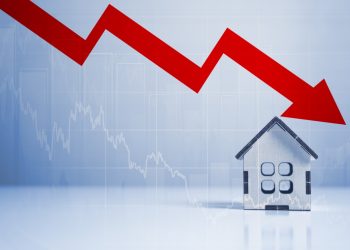After little movement over the last couple of weeks, mortgage rates are on the rise again.
According to the latest results of its Primary Mortgage Market Survey (PMMS®) from Freddie Mac, the 30-year fixed-rate mortgage (FRM) averaged 5.23%, up from 5.09% the week earlier.
Key findings:
- 30-year fixed-rate mortgage averaged 5.23% with an average 0.9 point as of June 9, 2022, up from last week when it averaged 5.09%. A year ago at this time, the 30-year FRM averaged 2.96%.
- 15-year fixed-rate mortgage averaged 4.38% with an average 0.8 point, up from last week when it averaged 4.32%. A year ago at this time, the 15-year FRM averaged 2.23%.
- 5-year Treasury-indexed hybrid adjustable-rate mortgage (ARM) averaged 4.12% with an average 0.3 point, up from last week when it averaged 4.04%. A year ago at this time, the 5-year ARM averaged 2.55%.
What the experts are saying:
“After little movement the last few weeks, mortgage rates rose again on the back of increased economic activity and incoming inflation data,” said Sam Khater, Freddie Mac’s chief economist. “The housing market is incredibly rate-sensitive, so as mortgage rates increase suddenly, demand again is pulling back. The material decline in purchase activity, combined with the rising supply of homes for sale, will cause a deceleration in price growth to more normal levels, providing some relief for buyers still interested in purchasing a home.”
Realtor.com’s Senior Economist and Manager of Economic Research, George Ratiu commented, “The Freddie Mac fixed rate for a 30-year rebounded from the past three weeks of declines, rising 14 basis points to 5.23%. This rise comes in anticipation of Friday’s inflation data and mirrors the rebound in the 10-year Treasury, which crested 3.0% mid-week. Investors have their eyes on the Consumer Price Index, expecting to see continued gains but at a moderating pace. The data will be an important measure for the Federal Reserve at its meeting next week. While it is not the central bank’s preferred measure of inflation, it is another metric detailing the health of the economy. With consumers feeling the pain of higher prices, a pullback in spending could push gross domestic product into negative territory. Several indicators are already pointing to slowing activity in the second quarter.”
“Real estate markets are laboring under the weight of record-high prices and rising mortgage rates. Mortgage applications have been declining with both purchases and refinances seeing pullbacks in activity. Buyers of a median-price home are looking at a monthly mortgage payment that is 55% higher than it was a year ago, adding an extra $695 to their monthly expenses. Compounding these pressures, almost 20 states have average gasoline prices above $5 per gallon, pushing living expenses to new highs, especially as employers insist on squeezing workers back into offices. For many Americans looking for affordable pockets of housing, mid-sized cities remain a viable alternative, especially as the number of homes for sale has been on the rise, bringing fresh options. The overarching challenge is balancing the ability to find a well-priced home, which often means traveling farther away from city centers, with the potential need to commute to an office. It is up to companies to maintain flexibility for a workforce which is being squeezed from all directions at once, or risk losing employees. The economic outlook is highly dependent on the well-being of the American consumer,” Ratiu concluded.












